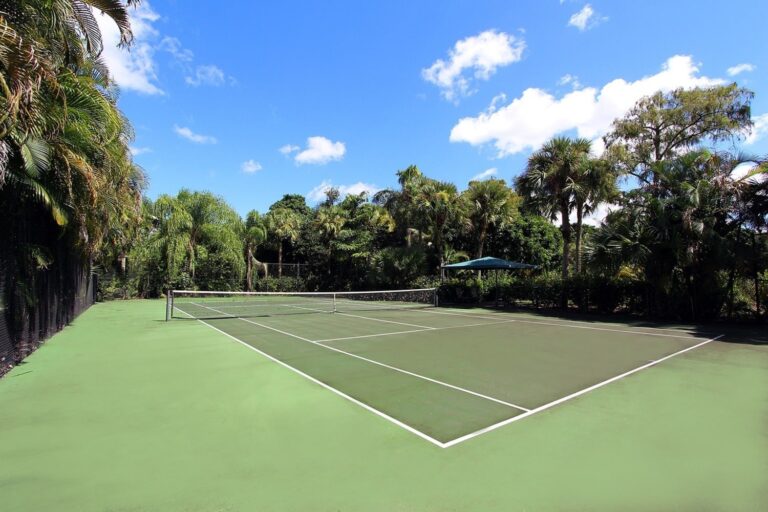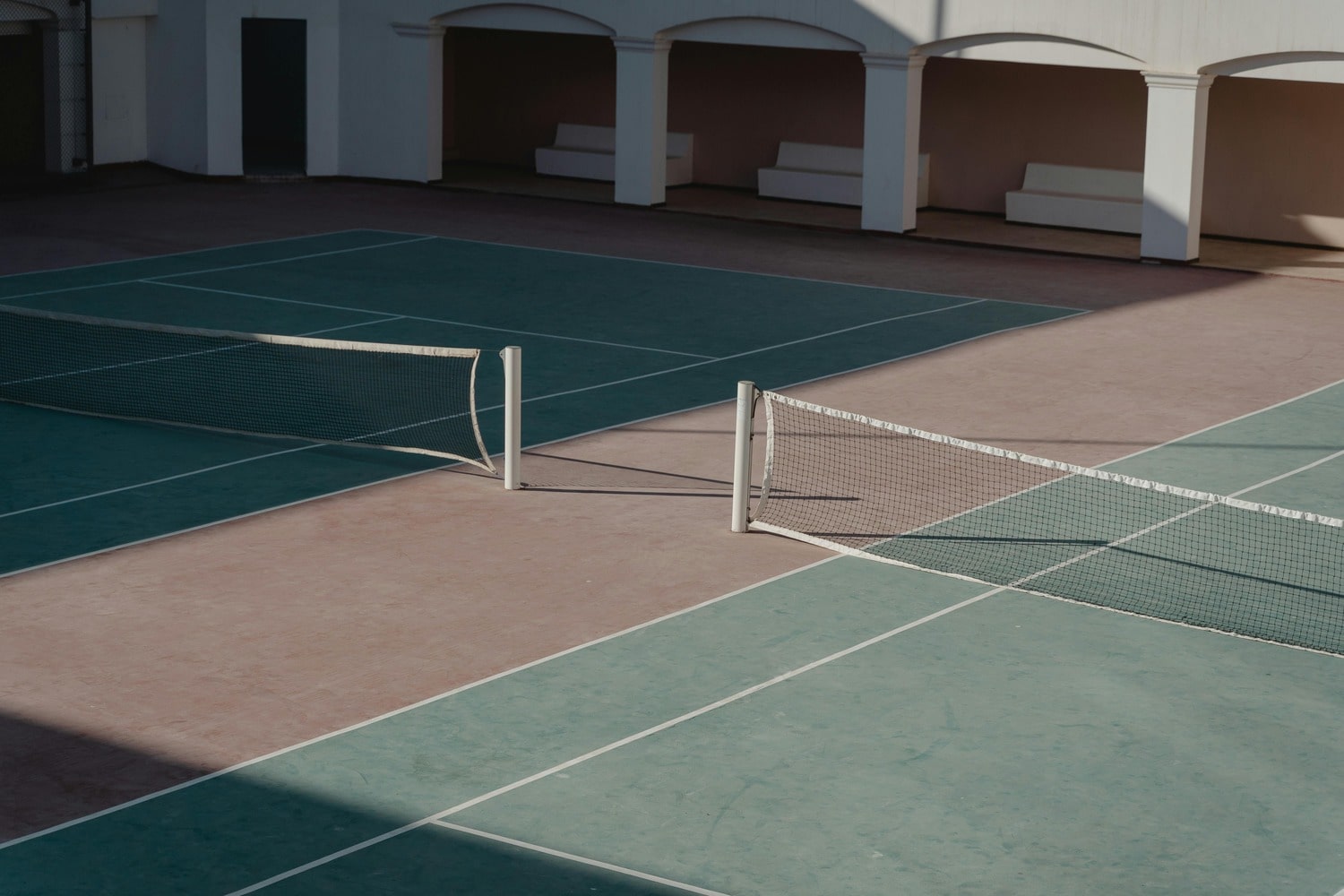Indoor Tennis Court Height refers to how tall these walls are. It might seem simple, but it makes a big difference in how the game is played. Indoor Tennis Courts are those courts that don’t face direct sunlight. They are different from outside tennis courts. Another excellent element is that the wind doesn’t slow the ball down or affect its direction. Indoor courts provide higher ball bounces. Indoor Tennis Court Height is an important factor contributing to the tennis experience. Imagine stepping into a large room with a special floor and high walls. Where you can hit a tennis ball back and forth with a friend or opponent.
Would you happen to know the wall area of the Indoor Tennis Court Height? The walls of an Indoor Tennis Court are not there to keep the tennis balls from flying away. They also have a specific height to ensure the game is fair and enjoyable. The tennis ball easily goes out of bounds if the walls are too low. It makes it challenging to keep the game going. If the walls are too high, it is too difficult for players to hit the ball over them.
The Indoor Tennis Court Height is well designed to create a balance, not too low, not too high. This way, players can have exciting rallies and make impressive shots. They hit shots without worrying too much about the ball going out of play. So when you step onto an Indoor Tennis Court, take a moment to notice the height. It’s a crucial part of what makes the game of tennis so much fun.
Table of Contents
ToggleIndoor Tennis Court Vs Outdoor Tennis Courts
Dimensions of Indoor Tennis Court Height
Indoor Tennis Court Height experiences less weather-related wear and tear. An indoor tennis court requires at least 40 feet of overhead clearance.

Dimensions for recreational purposes
- 29.5 feet above the net
- 20 feet over the baseline
- 16 feet above the backstop
Dimensions for tournaments
- 40 feet over the net
- 40 feet above the baseline
- 40 feet above the backstop
Basics of Indoor Tennis Court Height
When playing tennis indoors, the height of the court is important to know. The tennis court has walls around it, which are smaller than the ones outside. The walls are about 12 feet high. This is so the ball stays in play during the game. It’s like a big room with special rules. So, when you play tennis indoors, remember that the walls are there to keep the game fun and exciting. Understanding the height of the Indoor Tennis Court helps you play the game the right way.
Indoor Tennis Court Height for Roof
The roof height is less than 9 meters from the net. I was curious about the experience of playing on a local tennis court. Where the roof was often raised to a height of 8 meters (26 feet) at both the net and the baselines.
What about the lighting’s angle? If the lights are strung 8 or 9 meters above the ground, is it okay? The roof is 9 meters tall, and only 8 meters of it is usable due to supporting elements.

Required Dimensions
The dimensions needed for an indoor tennis court depend on the kind of structure. The specifications for each form of the structure are listed in the t
How to Build an Indoor Tennis Court?
It takes a lot of work to build an Indoor Tennis Court facility. Because you need to have enough floor area and height to allow for overhead lobs. Although you shouldn’t do this kind of project alone. It’s crucial to understand the process so you can check a contractor who is handling the work.
Finding a structure big enough to accommodate an indoor tennis court. Or whatever many tennis courts you intend to construct, is one of the first phases. A tennis court of 78 by 36 feet, with 18 feet behind each baseline, must fit within the layout.
USTA court requirements included a of 35 feet from the floor and the ceiling. There is at least 20 feet above the baselines, there may be a slope to the ceiling.
Creating a budget is the next step. Remember that the building process may take four to seven months. And the cost per square foot could range from $15 to $75.
Hiring a contractor to construct your indoor tennis court facility is one of the next tasks. Permission and approval will also needed to develop the structure.
Next, decide on the kind of court surfacing. Sport-court flooring, clay, or concrete are your alternatives.
The courts are not paved until the structure is well-built and the foundation is already laid. The required depth of the court foundation should advised by your construction contractor.
The foundation should be well used to set net posts. Along the center court line, posts are well-spaced 42 feet apart. If you are going to use concrete, you use two distinct color schemes. It will distinguish the inside court from the exterior court.
The tennis courts will after that be installed. Painting your lines is necessary if the concrete is being utilized. Installing the nets that lace up along each net post and pulling them tight. It will ensure that the net is 36 inches in the center and 39 inches tall at the net posts. Using the center strap that comes with your net, you can change the center net height.

Conclusion
In conclusion, the height of an Indoor Tennis Court is super important for the game. We learned that it’s not too high or too low, right? If it’s too high, the ball might fly away; if it’s too low, players might feel cramped. Courts have perfect height like Goldilocks’ porridge, not too tall or short. It’s perfect for an awesome game of tennis with friends or in tournaments.
So, when you play, remember, the height of the court is like the magic ingredient for the best tennis fun. Indoor Tennis Court Height is the best choice for personal training.
FAQs
What is the standard Indoor Tennis Court Height?
The standard height set by the ITF is less than 24 feet above the playing surface.
How does ceiling height impact the speed of the game?
A higher ceiling generally allows for faster-paced games. It enables players to unleash more powerful shots without the risk of hitting the ball into the roof.
Are there any regulations about lighting and ventilation in Indoor Tennis Court construction?
Yes, ITF regulations also include guidelines on lighting and ventilation. These are to ensure high playing conditions and maintain the integrity of the game.
For a tennis court, how many feet are required?
A tennis court should have a length of 120 feet and a width of 60 feet. Or the smallest of 7,200 square feet of total area needed for one court.

